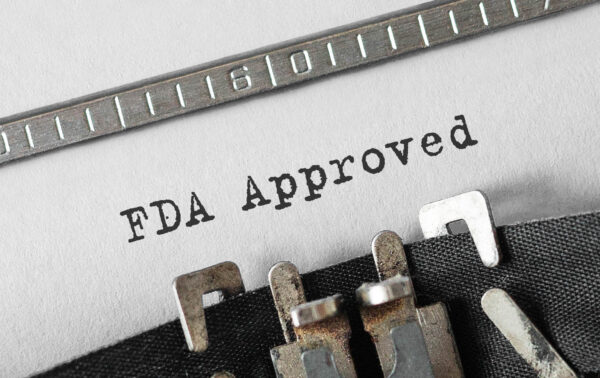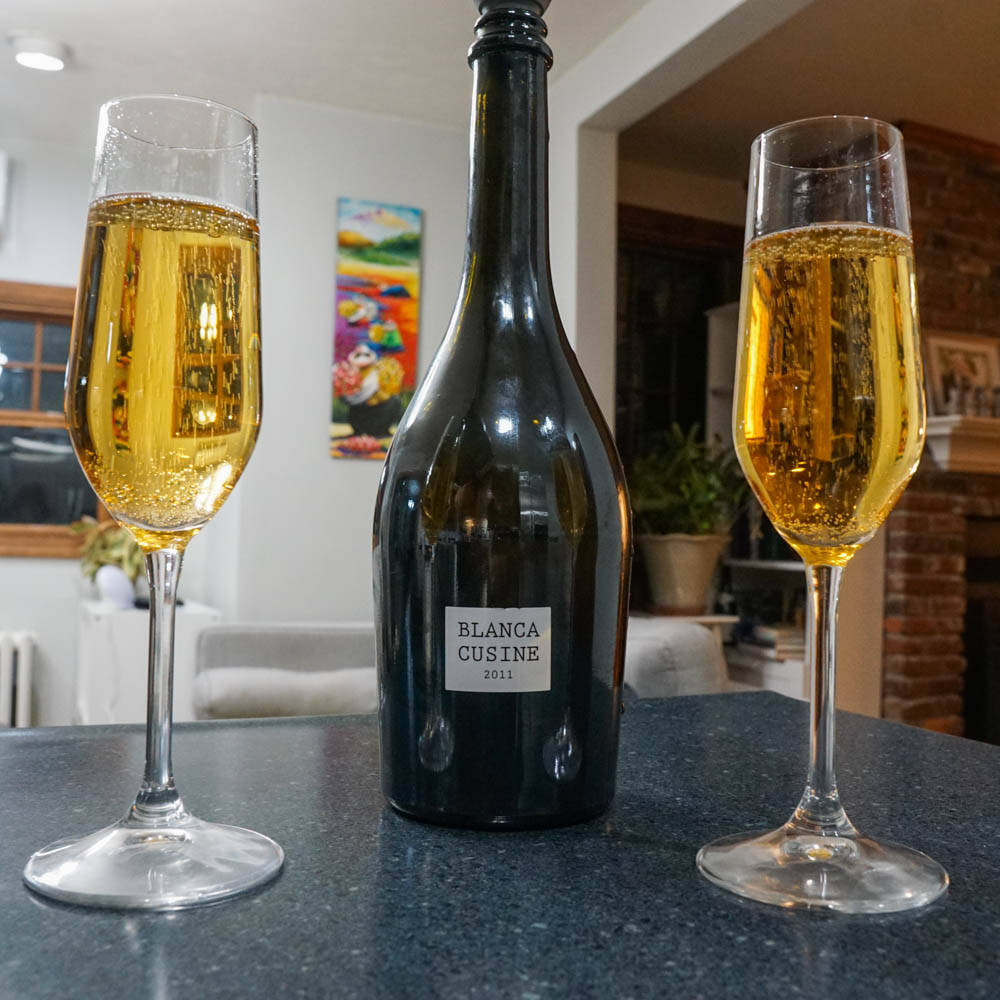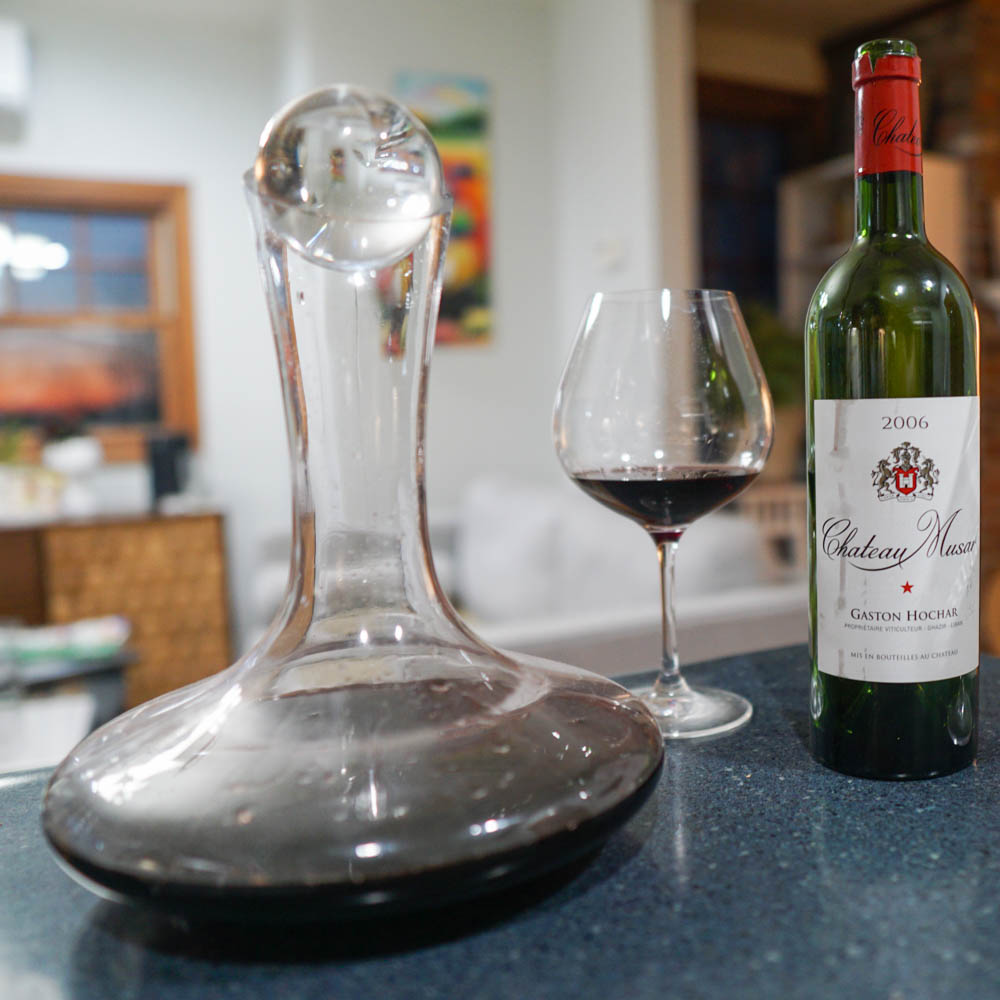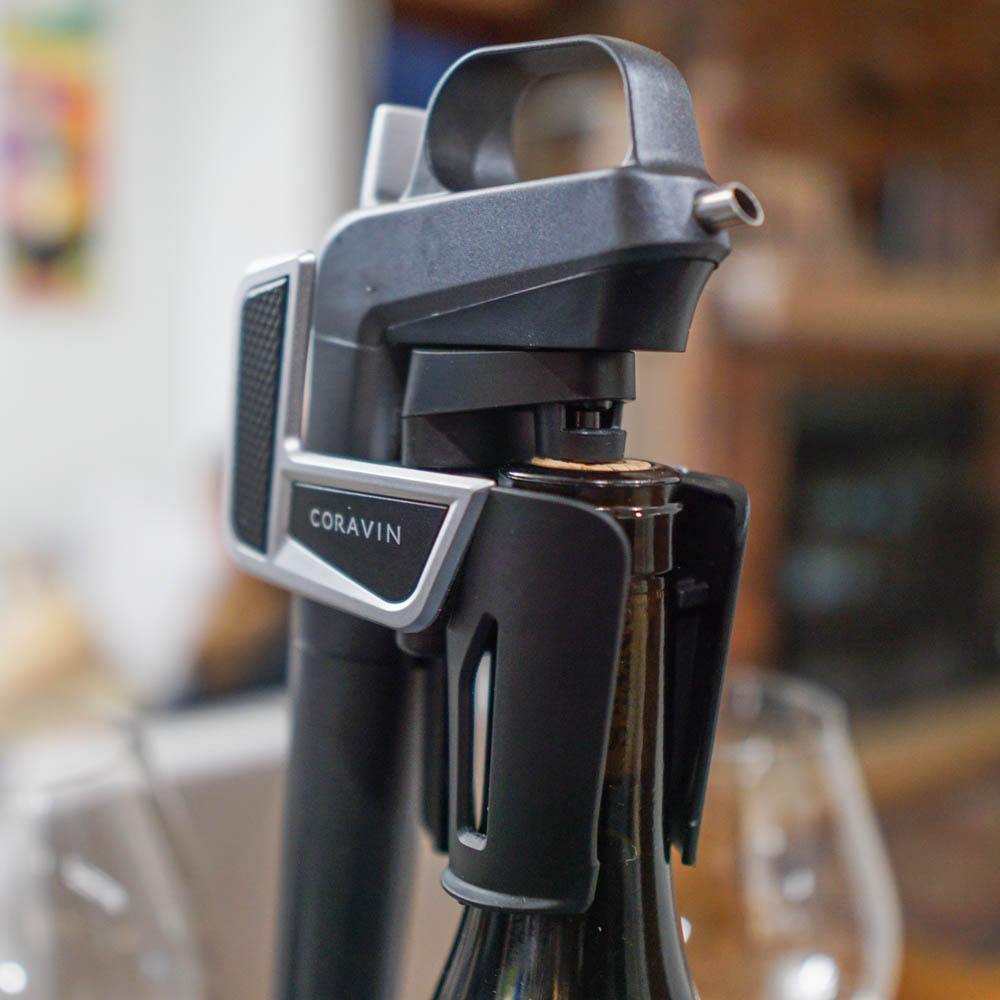Published by Jeremy.
Disclaimers: We use demographic data, email opt-ins, display advertising, and affiliate links to operate this site. Please review our Terms and Conditions for more information. This website is intended for those of legal drinking age in your jurisdiction.
As chemical engineers, one of the things we love about wine is the science of it all. The steps that go into transforming a simple grape into the alcoholic beverage we know and love are incredibly interesting to us, and learning about it is often one of our favorite parts of WSET wine classes.
But as our consumption of wine has increased, so has our consumption of wine-related media- print, online, and targeted ads that we otherwise did not want to see. What we've noticed is that there is a subset within the industry that pushes a narrative that conventionally processed wines have certain ingredients, additives specifically, that are bad for you and that natural, additive-free wines are inherently better.
While we personally have nothing against natural and additive-free wines (and regularly drink them- they can be quite good), there is one thing you should know- any business that discusses additives negatively is likely trying to take advantage of you to get you to buy their product.
The simple truth is that virtually everything you own or consume has additives in it up to and including the drinking water that comes out of your tap (the very same water used often in natural wines).
We see the chemical paranoia online almost every day and shake our heads at how unwarranted it is in most cases. Yes, there are some cases worth discussing in greater detail (of which we will do below), but most of the time it is complete garbage and deserves to be called out.
Anyone up to talk science? We are!
A Brief Lesson on Chemical Additives in Wine
If you have not learned about how additives are used in wine, you may be surprised to hear that the wine industry uses them at all. This is, of course, part of the shock factor certain companies want to hit you with to sell their product. Wine is often a whole lot more than grapes and yeast.
Fermentation really is just sugar (found in grapes) and yeast (also found in grapes at small concentrations such that cultured yeast, an additive, has to be used to complete fermentation) which undergo a biological reaction (fermentation) to create the alcohol we know and love. But producing wine and producing wine that people want to buy are two different things, and in many cases, some additives need to be used to achieve the qualities we look for in the latter.
So, what additives are used beyond yeast? Well, there are several. Some of the most common include:
- Sulfur dioxide: Used to prevent oxidation as well as sterilization to prevent bacteria growth. I think we can all agree this is a good thing.
- Copper sulfate: Used to bind up free sulfur and remove it. Another good thing.
- Sugars: Added to increase the alcohol production in cooler climates where grapes don't ripen as well. If you don't think this is a good thing, trust me that it is a good thing- we all love a wine that is about 12-14% ABV and some places the grapes just wont get there on their own.
- Fining agents: Things like egg whites, milk-based products, fish bladders, gelatin, and more to bind up particulates to make them easier to remove during filtering. I don't like drinking particulates, and unless you're vegan you probably won't care about most of these- odds are good you consume them regularly in other products anyway.
- Acidifiers and de-acidifiers: Tartaric acid and calcium carbonate are two examples used to adjust acid levels. These are used in many other products you eat and drink.
- Stabilizers: Acetaldehyde and dimethyl dicarbonate help ensure the wine doesn't lose its color (amongst others). If you are afraid of these purely by the scientific terms, we need to talk.
Some winemakers only use a few of these. Some use several. Others still try to use none at all. While some like to demonize these chemicals as being bad for you, the truth of the matter is that many of these chemicals are not just used in wine. Some are used in all manner of food products and a few I mentioned above can be found in municipal drinking water!
In fact, as a former water engineer, I can safely say if you're worried about these you may also want to think about the additives that are used in drinking water. There are chemicals that help protect lead lines from leaching out into the water supply, chlorine or chloramines to prevent bacteria growth, a different set of fining agents altogether, and even fluorine to help prevent tooth decay just to name a few. All of them will probably kill you if they're pure, but, thankfully, they're not- and that's the point.
When it comes down to it, the vast majority of chemicals will kill you if they're pure but are harmless in the concentrations that are being used. Chemicals like sulfur dioxide in wine or chlorine and chloramine in water, for example, are most certainly toxic to humans at high doses. But in low doses, they can be used safely and are used because they are necessary to prevent an even worse outcome (e.g. large-scale bacteria growth that will spoil the product outright and possibly make you ill or even kill you).
This is no different than drinking pure water- in large enough doses it will kill you. Water in the right construct (i.e. with proper amounts of minerals, salts, etc) does not. Wine, and the additives used in wine, are no different.
The problem we face right now is that winemakers follow the science. Marketers who want to sell natural wines want to tap into conventional fears from those who do not know the difference. This is the kind of garbage that I want to call out here as, sadly, the worst offenders all take a chapter out of the same playbook.
Why Additive Free Marketing is (Mostly) Garbage
The worst offenders with “anti-additive” marketing seem to promote a mad lib that almost writes itself. It goes something like this:
“[Additive chemical name], also known as [tradename], is toxic to humans if [pure/raw]. Our [Wine name] does not use this [poison/toxin/additive] so you can drink with confidence!”
I'm not even joking in that an ad of this style comes up for me on social media almost every single day (perks of the job, I guess) and I have to comment on all of them because people fall for it every single time.
Let's break this down as there are a few things going on here these companies don't want you to know:
- Listing the scientific name is a fearmongering tactic. People tend to equate long, scientific words negatively if they do not recognize the word immediately. Do you know what dihydrogen monoxide is? Sounds scary, but it is just water. In fact, most chemicals you know have multiple chemical and trade names used within the scientific community, and I can assure you at least one will sound ominous if you don't know better. In most cases, you're afraid of a word, not the chemical.
- This can also be done to scare you when a part of a chemical is associated with something bad. A good example of this is when something contains a formyl group as the instant jump is to shout “contains formaldehyde!” This is a predatory tactic for two reasons:
- Formyl groups and formaldehyde are not the same. One compound containing a formyl group can be safe while another is not.
- Many things contain formaldehyde outright and can be perfectly safe. Apples are one (in fact, many foods contain formaldehyde). But they just want to scare you because you know formaldehyde is also used for embalming. Eating an apple won't embalm you.
- Tradenames are often thrown around with similar effects. Again, words that are technical or exotic can be exploited as a fear factor if you don't know any better. For the most part, trade names are exotic-sounding because we're running out of words to trademark so marketing departments have to get creative with branding.
- Nearly all chemicals are toxic to humans when pure. Yes, you read that right. Almost all chemicals can be toxic to humans in the right dose. Thankfully, we don't go around ingesting pure sulfur dioxide, pure copper sulfate, pure oxygen, or pure dihydrogen monoxide (remember: it's just water).
Put it all together and you get the fearmongering that is used in conventional marketing. A certain additive may contain a formyl group, which is equated to formaldehyde, and is toxic for humans when pure. Let's ignore the fact that formaldehyde is safe to consume in low levels, like is found in food, or that the additive doesn't actually contain formaldehyde itself but just a formyl group- meaning it is a completely different chemical altogether.
Marketers, who are often not scientists, really, really want to exploit the fact that you don't know any better as a means to get you to buy their product. It is quite literally the oldest marketing ploy in the book. It is also really, really annoying.
- I do want to take a brief aside here and point out that you should go read about what happens if you consume pure water or pure oxygen in high enough doses. It is fascinating stuff.
The main takeaway you should have is that most chemicals used in food and beverage have a concentration threshold that is considered to be safe and a concentration threshold that is known to be not. In fact, many scientists, chemists, and engineers devote their entire careers to determining whether or not individual chemicals are safe for human consumption. Some may even spend decades researching a very specific aspect of one very specific chemical altogether- there is a lot of data out there!
I've personally met several highly trained scientists who specialize in researching the effects of oxidation byproducts via chloramine addition in drinking water, and honestly, you probably should just avoid the topic altogether. You won't be caring about wine additives if you go down that rabbit hole.
Repeat this with just about any chemical, and someone either works in the field almost exclusively or has done so in the past. Food and beverage additives are no different and these additives have likely been studied way more in-depth than your average marketer will have you believe. Odds are good they don't understand it well enough themselves.
In the United States, we even have a whole federal department that specializes in this, and you may have heard of it once or twice- it is called the Food & Drug Administration (the FDA). Within it, they have a list of chemicals that have been extensively researched over the decades that are Generally Regarded As Safe, also known as the GRAS list. This list includes, but is not limited to, the upper concentrations that can be used without known adverse effects in humans.
The reason additives in wines are not listed on labels is because they tend to fall on the GRAS list and are used within the FDA's published guidelines. It really is as simple as that.
They are not hidden because the winemaker is being nefarious. They are not trying to pull a fast one on consumers. They are, in all honesty, falling into nationally accepted guidelines that marketers often try to exploit- they're simply not going to tell you that the additive is on the FDA GRAS list because that will ruin the narrative.
So if you're worried about an unlabeled additive in your wine, you better be worried about unlabeled chemicals in every single food item you eat, all liquids you drink (including the water flowing from your tap), the chemicals found in your clothes, additives in the wine bottle, the additives present in the products in your house, and so on. Chemical additives are, without any bit of exaggeration, virtually everywhere.
But what about additives that are actually of concern, well, winemakers have to list them on the label.
When Additives Have Known Side Effects, It is Listed
As with all food and beverage, if an ingredient is being used that does not fall within the GRAS list, it has to be listed on the label. For wine, the biggest one is the little phrase you regularly see of “contains sulfites”. Virtually every wine has this on the label, and there are a few good reasons for it:
- It is well known that sulfites can cause a reaction in humans- most notably asthma-like symptoms for some that are sensitive.
- Some people attribute headaches, flushness, and hives to sulfites, but it is likely due to natural histamines found on the grapes and not sulfites. There has been false messaging on this topic due to the labeling requirement, but sulfites do still pose a concern with separate known reactions.
- Sulfites are often necessary in wine to prevent early oxidation and also to help protect from bacteria growth- as stated at the start of this article, both are good things.
- Finally, sulfites are often a natural byproduct of fermentation outright. Sometimes “contains sulfites” might be there because they naturally occurred, not because they were added.
How do we know all this about sulfites in particular? It is because of all those scientists and engineers who studied it. The reason it is on the label? Because the FDA requires it if present above a certain threshold which is, quite often, found in wine- as a natural byproduct or as an additive.
Funny how that works.
Another labeling feature you are starting to see popping up more and more is that some wines are listed as being listed as vegan. If you've wondered how a product made of grapes could not be vegan, well, it's because some items on the GRAS list include milk protein, egg whites, gelatin, and even fish bladders (the extracted collagen can be used as a fining agent). How do you know when these are not found in wine? The producer or importer will likely label it as being vegan.
Again, funny how that works.
Are any of these inherently bad for humans? No. Are they important to vegans? Absolutely. Hence why it ends up on a label.
We could continue to make fun of how marketers use fearmongering tactics to make consumers afraid of additives in the food and beverage industry. We could, quite literally, do it all day (so if you comment on this one to try and argue with us, be prepared to be made fun of- you are wrong). But really, to finish this one we have to go back to an admission made at the start of this article- we have nothing against additive-free wine. We'll enjoy a bottle of low sulfite, vegan, or additive-free / natural wine just as much as we will one that has sulfites, uses animal-based fining agents, or embraces other additives.
If the wine is good, we honestly don't care.
While chemical additives have their use in literally everything, we can also take a step back and applaud any winemaker that makes a delicious product with as little manipulation as possible- even if in the vast majority of cases it isn't really necessary.
If an additive-free wine can go toe-to-toe with a conventionally produced wine, that is a story worth reading- not because the conventional wine has scary chemicals, but because a natural winemaker was able to make a killer product on its own. As mentioned at the start of this article, you can make wine without additives just fine, but making wine people want to drink is the challenge. Reaching that level with additive-free wines is hard!
But if a winery's marketing department would rather degrade additives outright rather than hail the quality of their own product, well, odds are good you'll know why that is. They've likely got nothing else to go on.
The moral of the story is simply this- drink what tastes good. Like natural wine? Drink it. Like conventional wine? Drink it. Like both? Drink both. Don't let marketers con you into anything else (vegans and those with food allergies/sulfite sensitivities excluded).
It really is that simple!
Upgrade Your Home Wine Bar
Need to upgrade your wine bar? Grab some new wine accessories:







When 59 additives can be used in the EU in wine and 76 in the US, then at least the additives used should be listed on the label of the product, like in most other food and beverage products.
DMDC is an additive that turns into carbon dioxide and methanol when added to wine. Wine often contains very small amounts of methanol, but to indirectly add more of this toxic substance, is something the label should reflect when has been done.
This comment is a textbook example of “tell me you don’t understand what toxicity means without telling me you don’t know what toxicity means”. I’m sorry that you’re afraid of chemicals. I really, truly am. But you probably should stop drinking natural wine too if you are that afraid of practically non-detect levels of a chemical you were once told to be afraid of by someone who probably heard an anecdotal story about a moonshiner going blind once. I hate to break it to you, but natural wine will have scary chemicals too- some far more scary sounding than methanol even!
But seriously, the levels of methanol in wine are so low that you would give yourself alcohol poisoning before consuming enough methanol that this is an issue. So either you’re an alcoholic who needs help or you came here to cause a scene over a non-issue. Pick one, because your argument is completely pointless.
If an approved amount of BHA E320 (200mg/Kg) has been added to a Sparkling wine, should it be listed on the bottle label?
If it is an approved chemical on a GRAS list then you’re likely not going to see it on a label.
If one of the definitions of “natural wine” is that it is made using the traditional methods established several hundred years ago, before the slightest degree of industrialising the process, then the addition of sulphur dioxide is natural. It was discovered long ago that burning lumps of sulphur inside the wooden wine barrel, prior to filling and sealing it, prevented the effects of oxidation and improved the life and aging of the wine in that barrel. Burning the sulphur produces sulphur dioxide, as well as various other substances due to the poorly controlled way in which it was done. When winemakers and chemists eventually understood what was occurring and why it worked, they began adding precise quantities of pure sulphur dioxide gas to the fresh wine, achieving the same (or better) results using much less SO2, and none of the many unknown contaminants that came from burning lumps of sulphur in a wooden barrel.